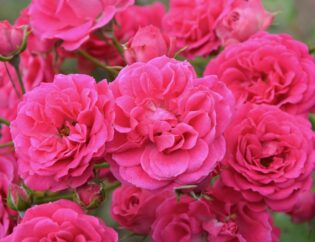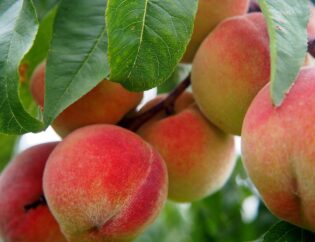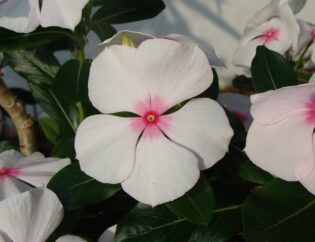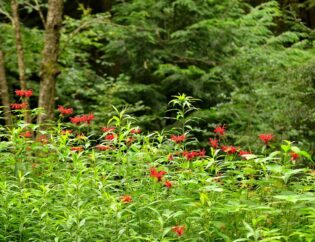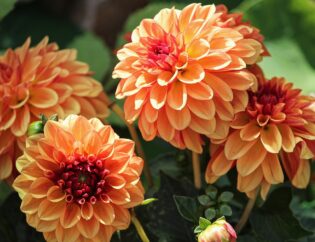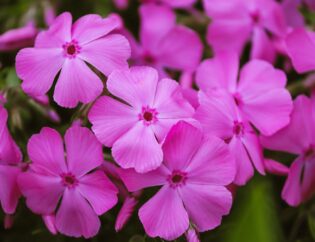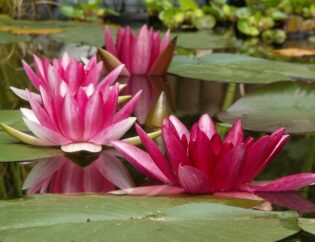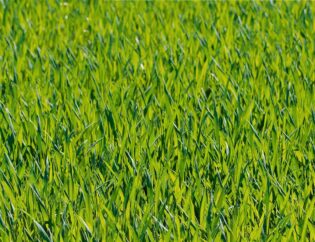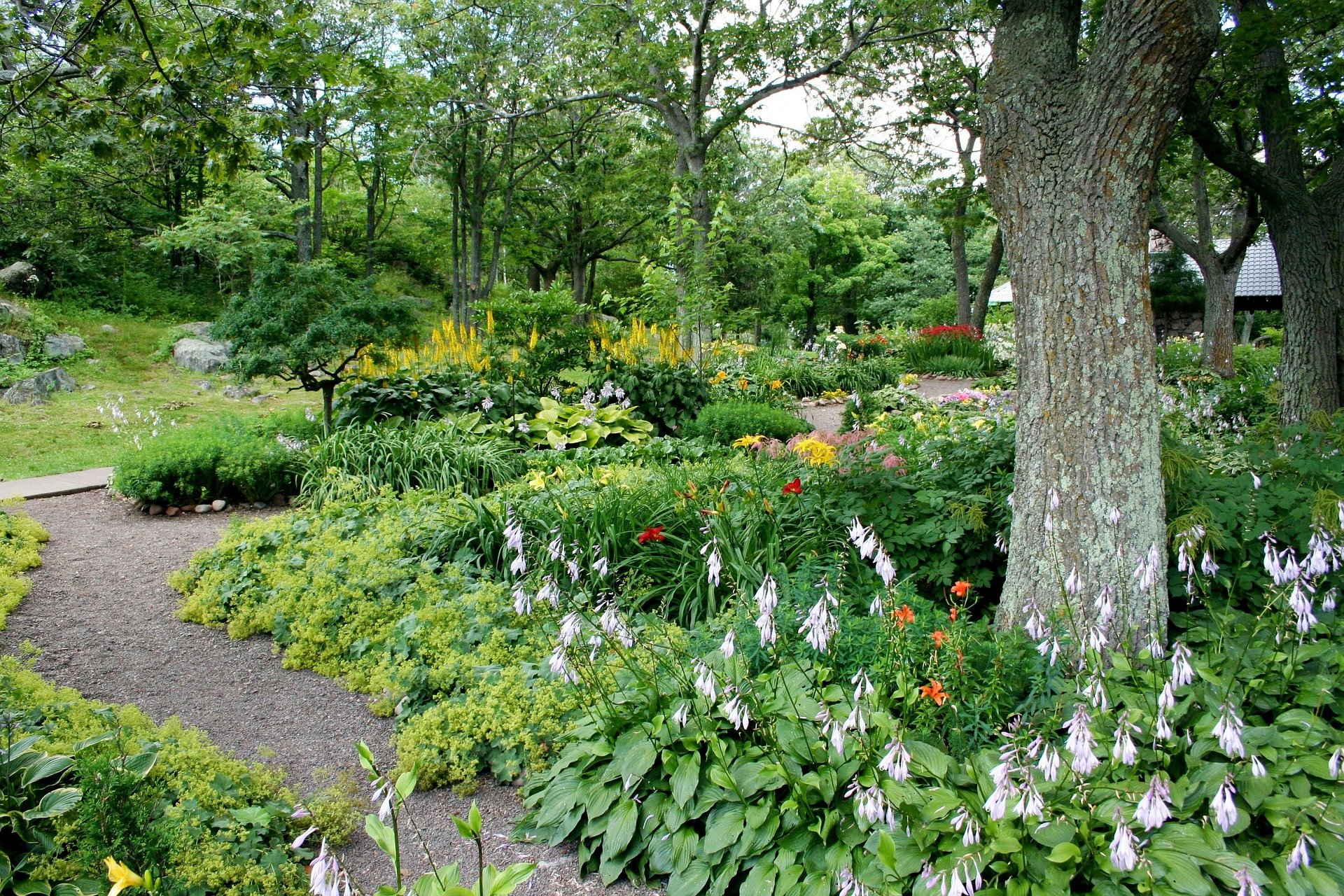
Knowing how to landscape around trees is important because trees are one of the best assets in landscaping! They provide shade, add color and texture, offer privacy, and make a home more desirable.
As long as it isn’t a problem tree (we can help you identify one here), healthy trees add beauty and value to any landscaping. But it takes special care to landscape around trees properly. Here are some of our best ideas and tips for how to landscape around trees.
Plant Shade-Loving Perennials in Calming Tones of Green

The sun gives life to a garden. Brilliant blooms turn their faces to the warm rays each day to grow beautiful and strong. After all, it takes a lot of energy for a plant to grow showy flowers.
Unfortunately, trees cut out a significant amount of sunlight for plants trying to catch some rays. But that doesn’t mean those flowerbeds at the base of trees can’t be dressed up. It just means it’s crucial to choose shade plants like ferns and hostas.
Mulch and Forget About It
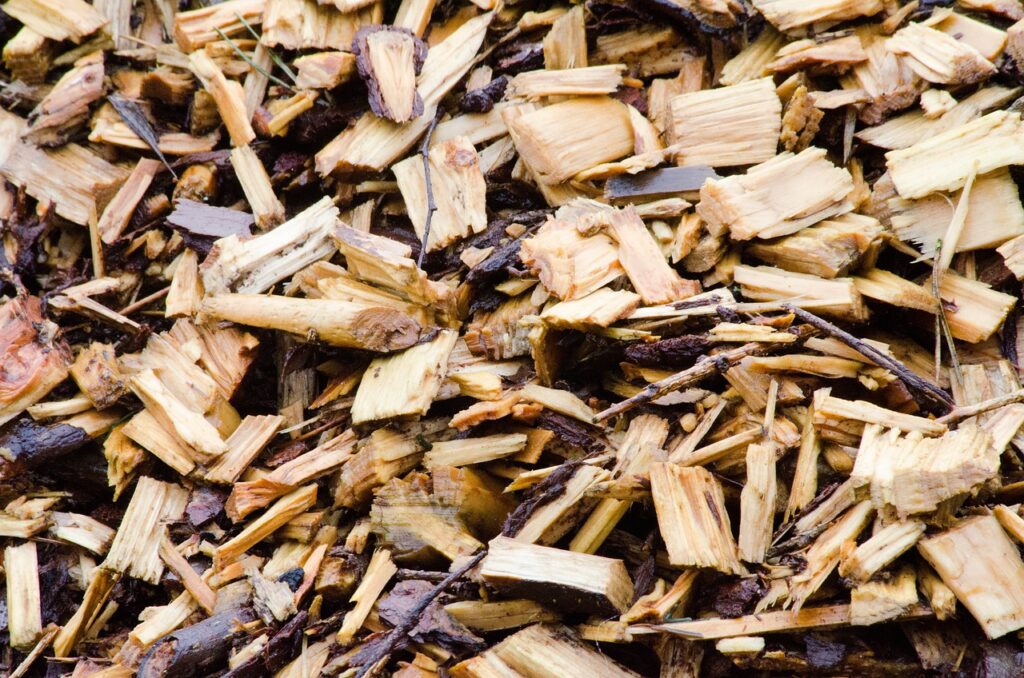
Mulch, small rocks or gravel, and wood chips are low-maintenance groundcover choices for those on a daily time crunch. It’s also a great choice for those wondering how to landscape around trees with roots/exposed roots. Mulch hides exposed roots while still allowing them to breathe, and a quick layer of landscape fabric makes maintenance a breeze .
It is also great for landscaping around pine trees, needle drop is less noticeable on mulch than it would be on other surfaces. Just be careful not to pile it against tree trunks (the moisture can cause damage). Easy to install, improves the soil, and cuts down on future maintenance? Yes, please!
Choose Vibrant, Beautiful Flowers

A shade garden at the base of a tree doesn’t have to be filled with just shades of green and brown if that’s not your thing. There are many blooming plants that are perfect for planting in a shade-garden — it’s just a matter of choosing the right flowers.
For example, shade tolerant ones include begonias, bleeding hearts, impatiens, and columbine. Just with those four, there is already a rainbow of choices to pick from! Lastly, finish the garden bed with a drip irrigation system for easy maintenance.
Build a Patio or Deck
Who says other plants or flowers are the only options to put at the base of trees? Their overarching limbs provide the perfect opportunity to enjoy a shaded entertaining space. So why not take advantage and add a comfortable deck or patio to your landscape design?
Raised wooden decks are a great choice around trees with shallow, spreading root systems. By raising the entertaining space off the ground, future unevenness and damage from roots is avoided. The deck also ensures pedestrians don’t trip over exposed roots.
Take a Seat

Of course, a whole structure isn’t necessary to enjoy tree shade. Create a comfortable place to sit with a custom bench around the base of the tree, swing, or hammock hung between multiple trees. Trees with seating double as a focal point in the outdoor space. Additionally, accessories like landscape lighting and cushions are a great way to customize the look.
The shade from a tree feels so much more refreshing than the shade from a roof overhang. There’s just something relaxing about being out in nature, and the convenience of having it right in your backyard can’t be beat.
Edge to Hide Unsightly Roots
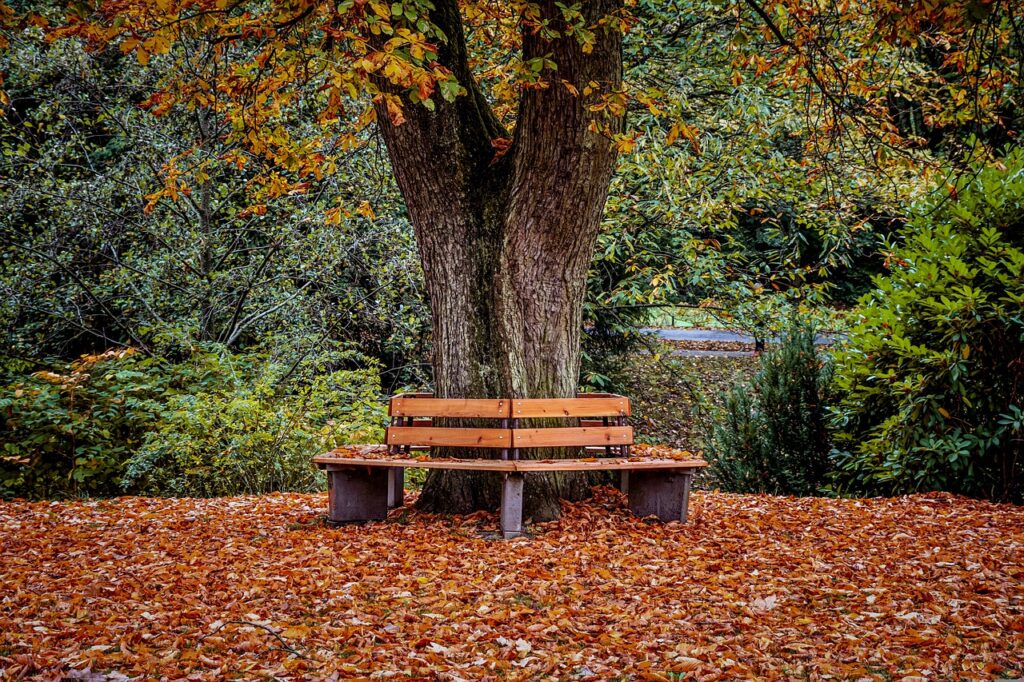
Exposed roots are a problem for two reasons — they are a trip hazard and they may be damaged by lawn care activities. Large shade trees also have large driplines (the circumference of the canopy of the tree as far as the branches extend). Roots typically reach out at least as far as the tree’s dripline.
A low border of bricks or pavers with mulch or plants around the tree is an attractive solution to both problems. Just be careful not to smother the roots or build the mulch against the trunk. Mulch holds moisture and can cause rot and other issues if packed against bark.
Most importantly, for the best tree health be sure to avoid tall raised beds. Shallow beds will allow for plenty of planting room and maintain the vitality of your tree.
Be Careful Around Fruit Trees

The only problem with gardening under trees is that they compete with the tree for water and nutrients. To help ensure a better harvest, use mulch around fruit trees instead of plants. Additionally, keeping the vegetation pared back away from fruit trees will give fewer places for pests to hide.
Do No Harm
Some trees dig deep, others don’t. Avoid excavating around the base of any tree, as it is easy to damage shallow roots. When planting in the root zone, dig carefully and slowly with hand tools to avoid damaging roots.
If the root system is broad and shallow, sometimes it’s easier to garden in containers than try to work in the soil. Choose shade tolerant annuals for planters that can be changed up year to year. If herbs are desired, mint is an option that grows well in the shade and in containers.
Degrees of Shade
Not all trees cast the same shadow. Larger, denser trees will block out more light than thinner ones. Keep the degree of shade in mind when choosing varieties for the base. It really sets homeowners up for success when new plants are placed in the right spot.
Consider Mulch for Perennial Top Dressing
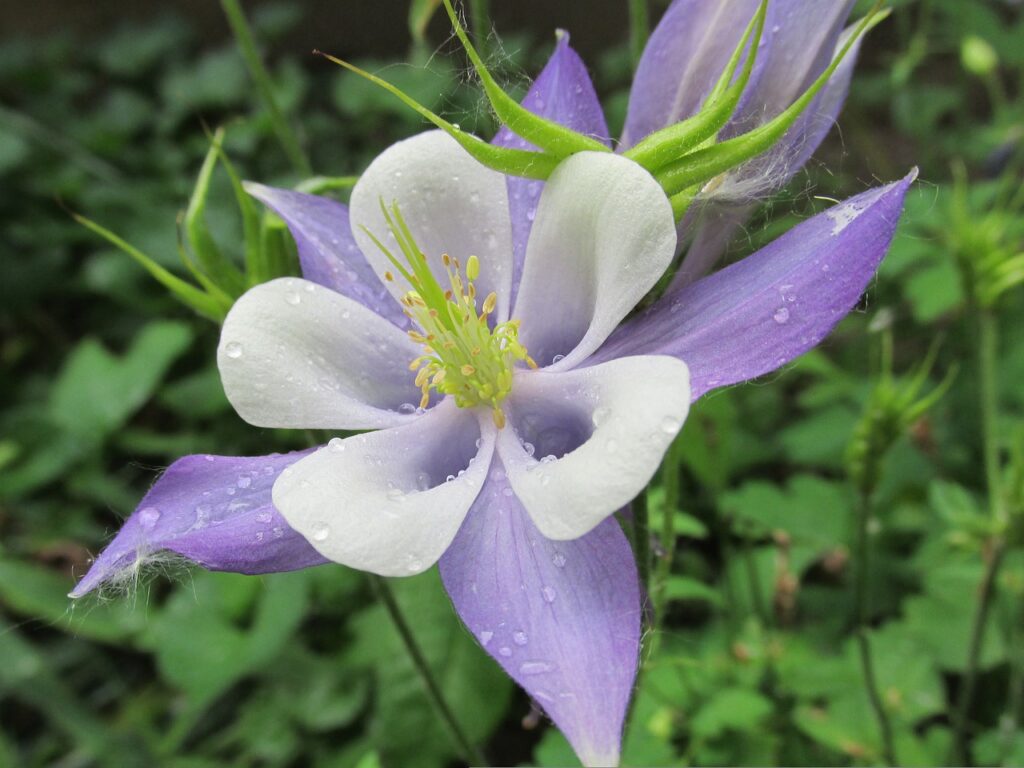
Another problem with planting at the base of trees is irrigation. Trees suck up a lot of water, often leaving little for the other plants to drink. A layer of mulch helps lock in the moisture and gives newer plants a fighting chance. Additionally, a layer of landscape fabric helps control weeds.
Resist the Urge to Bury a Tree
Be careful not to go overboard with mulch. Too much mulch or other debris around the trunk will invite pests, foster rot, and encourage disease. On that note, mature trees that are grown in place have roots acclimated to their environment. Burying existing root systems deeply can damage or kill the tree.
Stumps Don’t Have to be Forever

Stumps can be unsightly and turn into a trip hazard. It might seem like a lot of work to get rid of a stump after cutting down a tree, but it is well worth the effort and expense.
A stump grinder makes stump removal manageable, and the resulting mulch can be applied around the yard. For homeowners unfamiliar with their use, stump removal is a common landscaping service.
Give the Tree a Check-Up
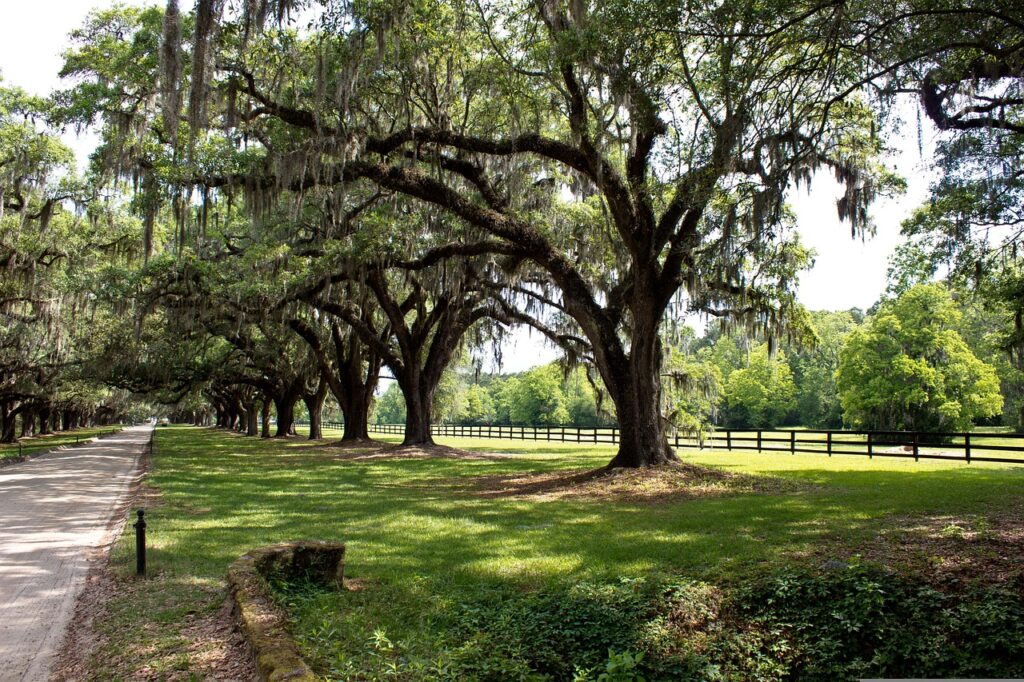
As you learn how to landscape around trees, take the opportunity to check the health of the tree. Prune for shape and health as trees grows. Taking the time to ensure trees are growing well is a major investment in a home’s landscaping and the property’s future value.
Need a Landscaping and Tree Expert?
Atlanta Turf & Tree’s team has over 35 years of combined experience turning Atlanta-area yards into living works of art. Contact our landscaping services experts today to get started on your project.
